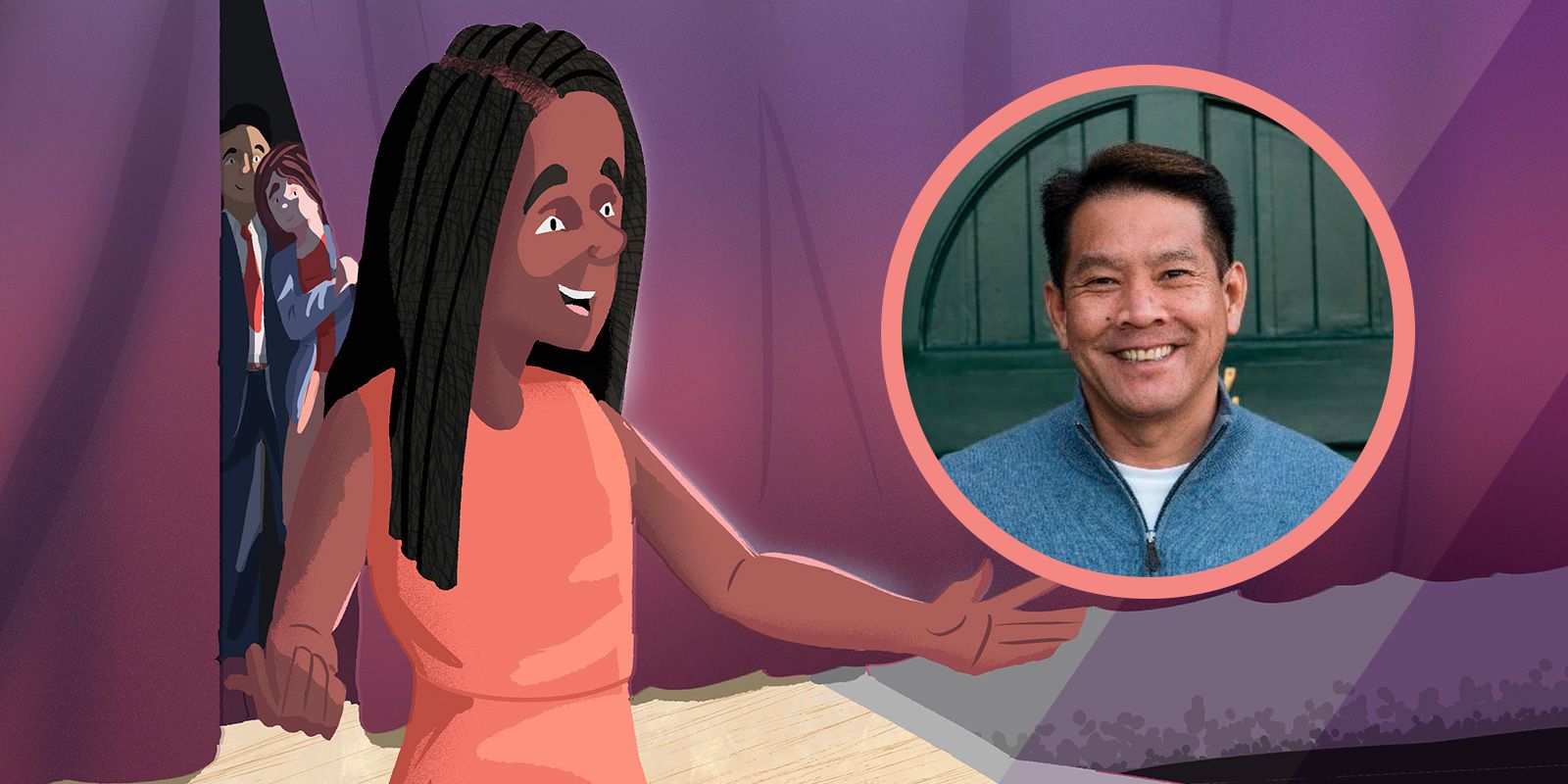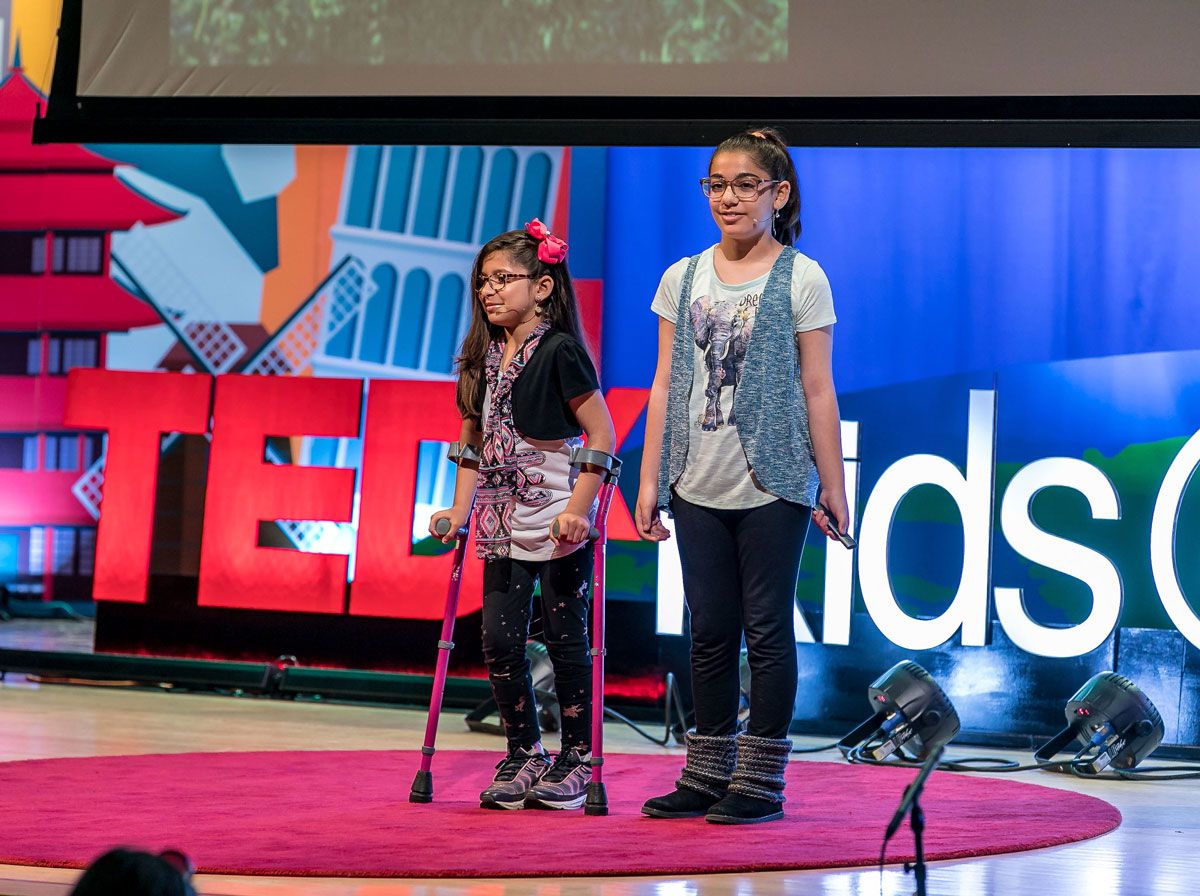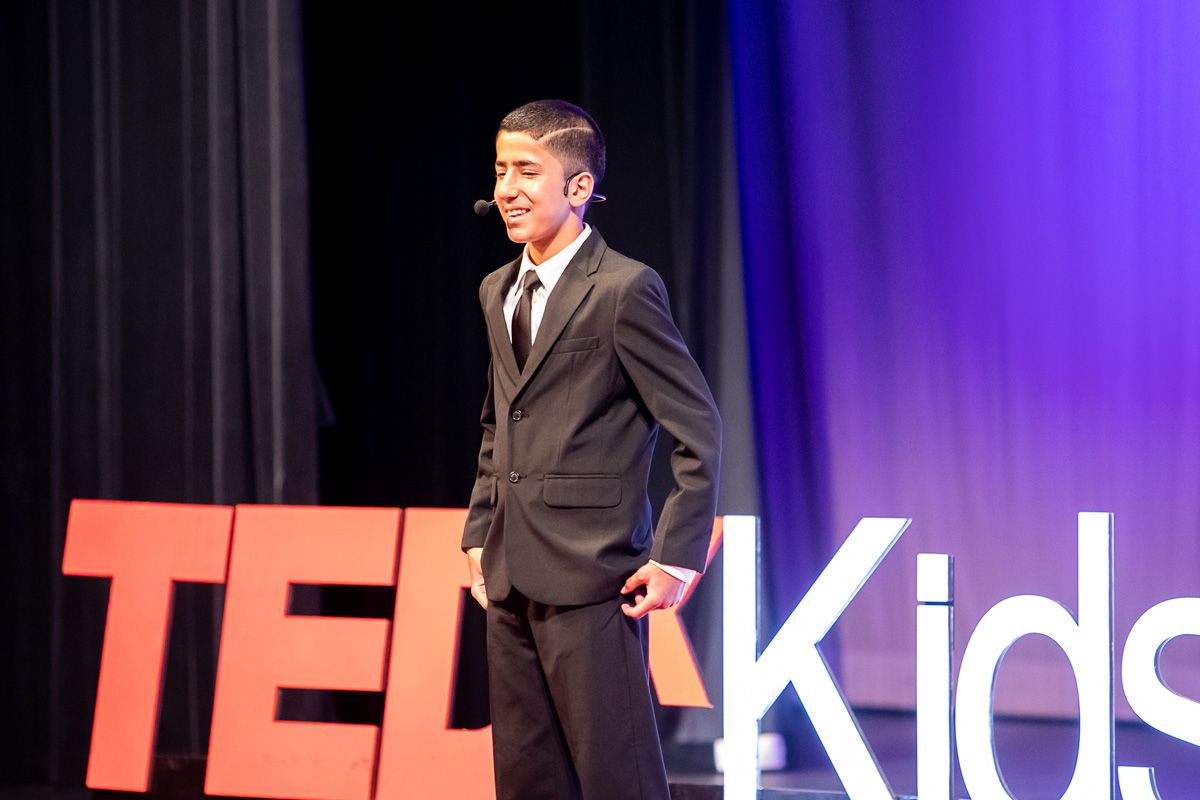Dr. David Miyashiro: Creating a Culture of Storytelling
In this Superintendent Perspective, Dr. David Miyashiro shares how students in Cajon Valley USD learn to share their stories—with a little help from TED.

President John Adams once said, “There are two educations. One should teach us how to make a living and the other how to live.” In everything we do at Cajon Valley USD, we aim to provide both. As educators, we’re trying to repair the fading American dream, so we have to get back to the basics of school—listening to our students and helping them discover and nurture their identities. In Cajon Valley, we’re doing that through the power of storytelling.
The first thing a prospective employer says in a job interview is usually, “Tell me about yourself.” Our elementary students can tell you about themselves—about their ideas, their backgrounds, their struggles, their passions, their cultures and customs—in such compelling and comfortable ways that you feel like you’re sitting down with an old friend.
This all started a few years ago when I fell in love with the TED organization. After watching Sir Ken Robinson’s 2006 TED Talk “Do schools kill creativity?” I became enthralled with TED and the power of personal storytelling. Then I saw Logan LaPlante’s 2013 talk “Hackschooling makes me happy.” This confident 13-year-old gets up on stage and discusses self-directed learning, arguing that schools should teach kids to be curious and, most of all, happy. In his talk, LaPlante says, “hackers are people who challenge and change the systems to make them work differently, to make them work better.”
In Cajon Valley, we’ve challenged and changed our systems to be driven by student voices and stories. Integrating the TED-Ed curriculum into our classrooms has been a big part of that. I played LaPlante’s talk for my staff at one of our welcome back breakfasts and people really leaned in—they wanted to hear what this kid had to say. Video has such an effect on people, and when you harness that power to tell the stories of our kids and our schools, it changes the district culture.
I’m in my eighth year here as superintendent, and I’ve learned that part of marketing and branding is nurturing your culture. We need to practice what we preach in terms of taking care of one another. Giving our students a platform like TED has allowed us to do just that—and to show the world who we really are as a school system in the process. After all, the best testimonials come directly from our students.
Why TED?
In 2014, I was invited to a TEDx event at San Diego State University to speak about blended and personalized learning. This gave me my very first behind-the-scenes look at what goes into a TED event—and it turned out to be a humbling experience.
At first, I thought I would just get a time limit from the event organizers, show up, and do my thing without much preparation. When they told me I’d need to deliver a slide deck with a script months in advance of my talk, I naively said, “I don’t work that way.” Then, they gave me the option to either do it their way or not speak at all—so I went with their plan.
That’s really where the potential application to our schools started to reveal itself. I was assigned a speaker coach who pushed me in my writing and helped me put together a PowerPoint catered to my specific audience. I had never been coached or mentored in this sort of thing in my life. To think about my audience and then participate in a community event with the mission of improving the human condition—it was just awesome.
Several of my colleagues from the district came to my talk at San Diego State, and afterward, we were all thinking the same thing: We have to do this for our kids. If we can give them coaching and mentoring on how to speak and deliver impactful messages, the value could be life-changing. Those skills carry over into everything. Every time we open our mouths or take a stage, we have the power to strengthen or wreck a relationship within a matter of seconds.
Now that we’ve put these ideas into practice, we’re seeing tangible benefits. This new intentionality behind oral and written communication in our school district has helped English language learners, kids with special needs, and students on their paths to gainful employment. Now when our kids get up to speak about anything, their ability to captivate you is amazing.
Talking the (TED) Talk
At the end of the day, we want students to be able to tell their own stories, and we’re seeing so much confidence and storytelling capacity develop in our kids. But incorporating TED into our schools isn’t just about teaching public speaking and confidence—it’s also about building community and teaching SEL.

Around the same time I gave my first talk in 2014, we found out TED was launching a new branch called TED-Ed. They were developing a curriculum for young students to take ideas worth spreading and turn them into performances on stage, with intentional coaching and mentoring along the way. Our district actually served as co-collaborators on TED-Ed’s presentation literacy curriculum. Seven years later, every student in Cajon Valley USD explores that curriculum as part of their K-8 education. But it doesn’t end there. We wanted to give our kids the entire TED experience, so we asked: Why couldn’t this TED-Ed curriculum lead up to an annual community TEDx event?
Like the one I participated in at San Diego State, TEDx events are organized by local communities, using the TED name, mission, and rules. You have to apply for a license to organize an event, and once that’s done, you have to follow stringent protocols: ensuring high video quality, intentionally keeping your audiences inclusive, and making sure speakers aren’t selling anything on stage. After attending a mandatory TED Organizer Workshop, organizers are given a TED bible to guide them long before they start inviting speakers. TEDx events have to be not-for-profit and must amplify voices within a community to invigorate and improve the local condition.
I won’t lie—our first TEDx event was a little wonky. But after seeing all the possibilities, so many people volunteered to participate and help us organize the next one. Now, we are able to unite a district of 27 schools around a common vision and mission. It just gets better and better every year.
From Classroom to Stage
In our TED-infused classrooms, not only are kids sharing ideas, but teachers are also coaching them on how to organize and present those ideas with the most impact. Our curriculum guides students through the process of writing a presentation script, organizing it with speaker notes, and presenting their stories effectively—with their peers acting as their first audience.
Even though we’re an elementary district, we began building our curriculum by thinking about how we’d want a high school senior to present their story. Then, we scaffolded that down all the way back through middle school and elementary, starting in kindergarten. At that level, it begins simply with kids sitting in a circle, sharing things about themselves. Then, as our students move up and get more comfortable, we incorporate TED coaching methodology, helping them analyze and discuss videos of other kids’ presentations. As a result of this thoughtful curriculum, we’ve seen a transformation both in our students’ self-confidence and in their relationships with one another.
As soon as we started blending the TED-Ed curriculum with our annual TEDx events, something interesting began happening. Telling their stories to a classroom audience helped our students form community with their classmates. When a student tells their own story, they go deep into why they’re talking about a topic: who they are, their beliefs, sometimes even their religious and cultural backgrounds. So our students started to know one another deeply, developing friendships on different levels. We realized that so many of the problems we’re trying to address—inequity, injustice, bullying—can be mitigated by allowing children to tell their stories to one another. When kids build healthy relationships early on, a lot of those things just go away.
In partnership with the TED team, we’ve digitized the TED-Ed curriculum for our teachers and students. Our vision is to have happy kids engaged in healthy relationships on a path to gainful employment, and these explorations are a huge part of that. TED Talks help cultivate the long-term soft skills that every student needs: creativity, persuasion, collaboration, adaptability, and emotional intelligence. Here, we call them “power skills.” It’s not just that our students can get up and speak; they can also talk about how they developed those ideas. The sense of community being built in our classrooms as a result of this one curriculum innovation is transformative.

Their Stories, Our Story
Helping our kids tell their own stories has, in turn, allowed us to tell the Cajon Valley story in a special, far-reaching way. All the things we do in marketing and branding are centered around culture and connecting our community to our district vision. We want people to know that our diverse group of students and stakeholders embraces everyone. So TEDxKids@ElCajon is impacting the way our community sees our brand and how our students and staff uphold our vision.
Many of our teachers have taken part in the TED for Educators Masterclass, facilitated by a district employee who has been trained by the TED team. Like I did years ago, educators learn how to create their own talks—and how to speak with intentionality every time they’re in front of students, colleagues, or the community. We have to be thoughtful about what we say, just like our kids, and we need to have a plan that gives our words the greatest possible impact. Naturally, teachers who go through the TED process are more bought into helping our students develop their storytelling skills, and they’re more invested in our district culture as a whole.
Hearing one another’s stories has created a culture where we teach our kids not only how to make a living, but also how to live. Take José, for instance. As a first-grader, he gave a talk about bullying at one of our TEDx events. By fourth grade, his love of public speaking had earned him an invitation to speak at San Diego State about sewage issues forcing beach closures near the Tijuana border. He didn’t just nail his speech; he presented it in English and Spanish.
Then there’s Zia. He was one of our presenters in 2020, when our TEDx event had to go completely virtual. Because of the pandemic, our students gave their talks one at a time to an empty theater, with just their families watching in person. When he told his story, his father and brother cried the entire time. Zia, who had just come to the country a few years prior, was being validated not only for his public speaking, but because of his heritage in Afghanistan. Stories like this make the point of this curriculum clear: It helps every student be known and appreciated.
One of my favorite talks came from a student a couple of years ago. “Imagine every time you leave your house, you know you have to be ready to expect hateful and cruel comments to be thrown at you,” her talk began. “Hey there, I’m Ruqiya. I’m an ordinary young girl living life. I am full of dreams that will hopefully become true. I am a Hijabi—that means a girl with a scarf on her head. I came here to talk to you about my life as a Hijabi.”
How do we combat racism and social inequities? We give every student a stage to tell their personal story. In that same classroom where Ruqiya is discussing her rite of passage, there could be a Jewish student who relates that to his bar mitzvah or a Latina student excited for her upcoming quinceañera. As our kids get to know one another deeply by telling their stories, they see the similarities between their lives—and that helps them form healthy relationships from the get-go. If we can foster those relationships, I believe we can avoid having to combat racism and bias in high school.
A Voice in This World
While these are impressive examples, our program has nurtured confidence and storytelling ability in all of our students, making each one of them capable of giving these kinds of talks to any audience. Every school system would benefit from this type of learning, where kids are center stage and their stories are validated by peers and adults. If we want to have happy, healthy kids on their way to gainful employment, we have to create communities of support, empathy, and understanding. There’s no better way to do that than by hearing and sharing our kids’ stories.
In her talk, our student Apiou called herself one of “the lucky ones.” She talked about the struggles of her father, a Lost Boy of Sudan, from growing up in refugee camps to getting Apiou’s family safely to the United States. Her story resonated so much with the community and her peers that she was invited as a guest on her school’s student-run news show. When asked how it feels to know that her TED Talk has inspired so many, Apiou answered, “It feels really great to know that I have a voice in this world.”
In Cajon Valley, we are having a blast helping our kids find and share their voices. More importantly, we are changing lives through the power of storytelling and the community it can grow. Kids who can tell their own stories, feel comfortable in their own skin, and believe in their dreams for the future—those are happy kids.
Subscribe below to stay connected with SchoolCEO!


